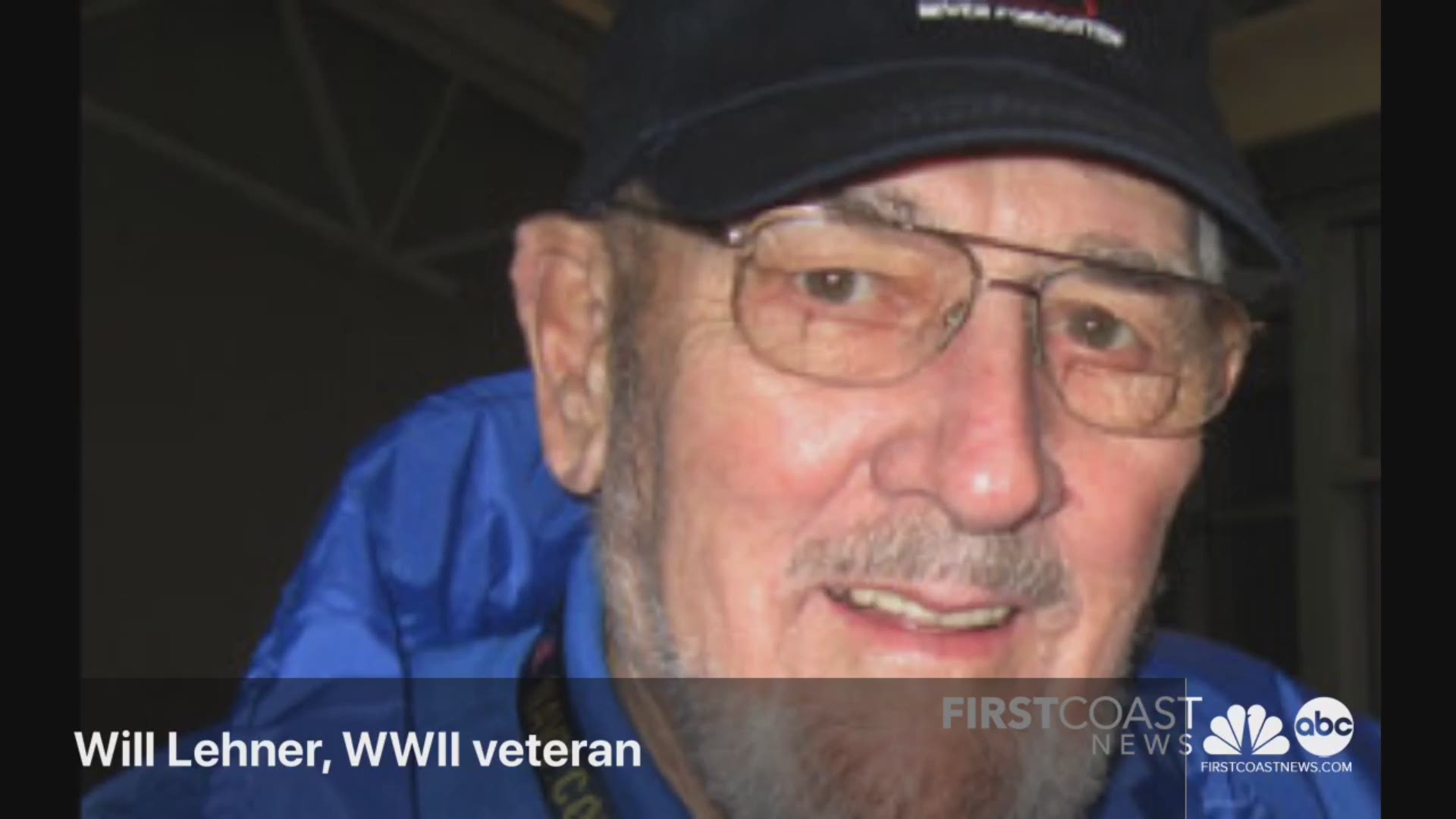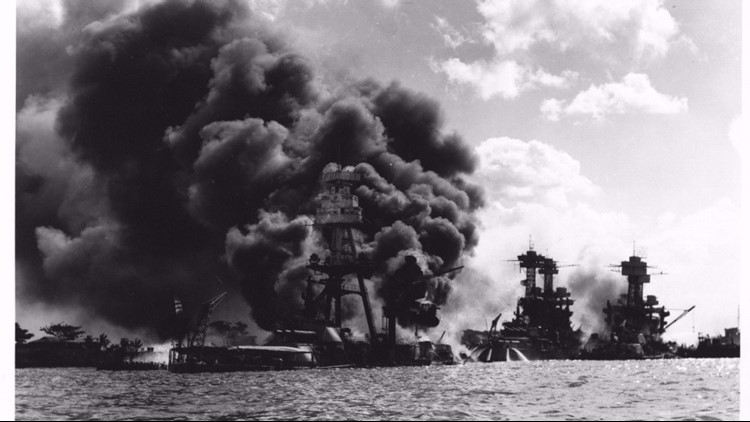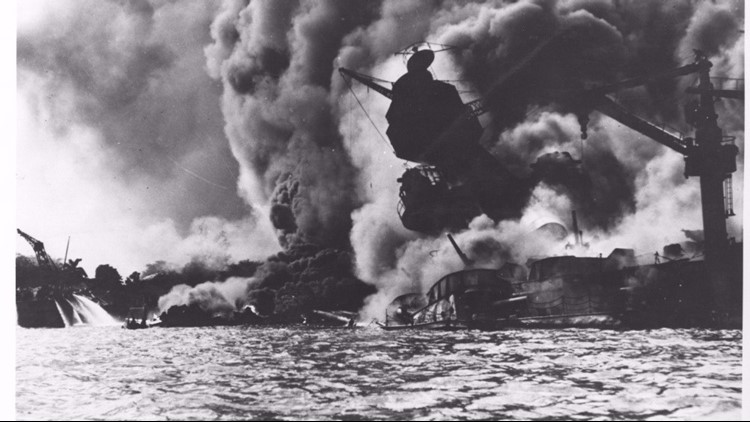JACKSONVILLE, Fla. — After meeting Will Lehner in 2005, I've thought about him every Dec. 7 since and anytime someone mentions Pearl Harbor. I was city editor at the Stevens Point Journal newspaper in Wisconsin when I first met Mr. Lehner. He's a household name around those parts for the story he and fellow USS Ward shipmates told from Dec. 7, 1941 to the day they died. I'm sure any survivors are still telling it.
At the time I met Mr. Lehner, he told me 80 of the 130 men aboard the USS Ward were still alive. I'm not sure how many are alive today, but Mr. Lehner died at 98 in January 2020.
He and his shipmates formed a group called First Shot Naval Vets club in St. Paul, Minnesota in 1947 and they'd meet regularly. Their bond was steeped in what happened in Pearl Harbor hours before the U.S. naval base near Honolulu, Hawaii was attacked sinking four battleships and leaving 2,390 dead.
While patrolling the entrance to Pearl Harbor just before 7 a.m. on Dec. 7, 1941, the Ward spotted a two-man Japanese submarine.
'A lot of people didn't believe us'
"We went out on patrol Dec. 7, 1941, at 3:30 a.m." Lehner told me. "We were called to our battle stations." The extra early drill was not customary, Lehner said adding that he and the crew thought it was just their new skipper. Days before the attack, the USS Ward came under the command of Lt. William Outerbridge.
"We found out later that they thought they had spotted a submarine periscope," Lehner told me.
At around 6 a.m., the men were called to their battle stations again thinking it was nothing more than the rigorous schedule of a new commander. Lehner told me that changed when they saw a gunning tower of a sub emerge from the water.
"We didn't know whose it was," Lehner recalled. "We didn't know if it was one of ours, but it was in restricted water.
"We fired on it with the number one gun," said Lehner, an ammunitions handler on the Ward from 1941 to 1944. He recalled, "The first shot went right over it. We fired the number three gun on the galley deckhouse and hit it between the gunning tower and hull."
Lehner said he observed four explosives attached to the sub as it sank after being hit.
Lt. Outerbridge, the Ward's commander, then sent the following message to U.S. forces in Honolulu: "We have attacked, fired upon and dropped depth charges upon submarine operating in defensive sea area."
Outbridge's message, still debated until this day, never registered with the higher ups in American forces. The warning was largely ignored and the Japanese were successful in surprising U.S. forces and citizens despite the Ward's warning that something wasn't quite right that morning in Pearl Harbor.
In the decades that followed, Lehner and members of the First Shot Naval Vets club would tell anyone who'd listen, "We fired the first shots in Pearl Harbor," Lehner told me.
"A lot of people didn't believe us," he said. "They'd say, 'You don't have any proof. How can you say you sunk it?'" Lehner said. "We saw it go down. I saw it go down."
Searching for the sunken sub
Robert Ballard is a world famous sea explorer most known for finding the R.M.S. Titanic in 1985. Lehner and four of his former shipmates received a call from him in 2000. Ballard told them if their claims are true and they sunk a sub in the Pacific Ocean 59 years earlier, he'd find. He invited the men to accompany him on the voyage.
Lehner and his former shipmates jumped at the chance and joined Ballard and his crew in Hawaii.
After spending more than two weeks at sea, they found nothing. The doubts continued.
That changed two years later in August 2002.
'We found that sub you sunk'
Terry Kirby, a researcher with the Hawaii Undersea Laboratory, called Lehner in August 2002. He told him who he was and said something he'd never forget.
"We found that sub you sunk."
"It was a big closure for me," Lehner told me. He not only offered to go out to sea with Kirby and his researchers, but this time, the now 80-year-old veteran said he wanted to plunge 1,200 feet to bottom of the Pacific Ocean in a three-man tank.
He went down inside the tiny capsule spending 31 hours peering at the submarine he last saw the morning of Dec. 7, 1941. Technology allowed pictures to be taken and enlarged of the bullet hole on the sub in the exact place Lehner recalled seeing it 61 years prior.
"It was the chance of my life," Lehner said.
Many researchers compare the find to only that of the R.M.S. Titanic, but for the First Shot Naval Vets club and Will Lehner, it was vindication.
Harold Goodridge is Digital Director at First Coast News and an award-winning newspaper columnist.
Photos: The attack on Pearl Harbor





